Wi-Fi at the Arkhangelskoye Museum-Estate
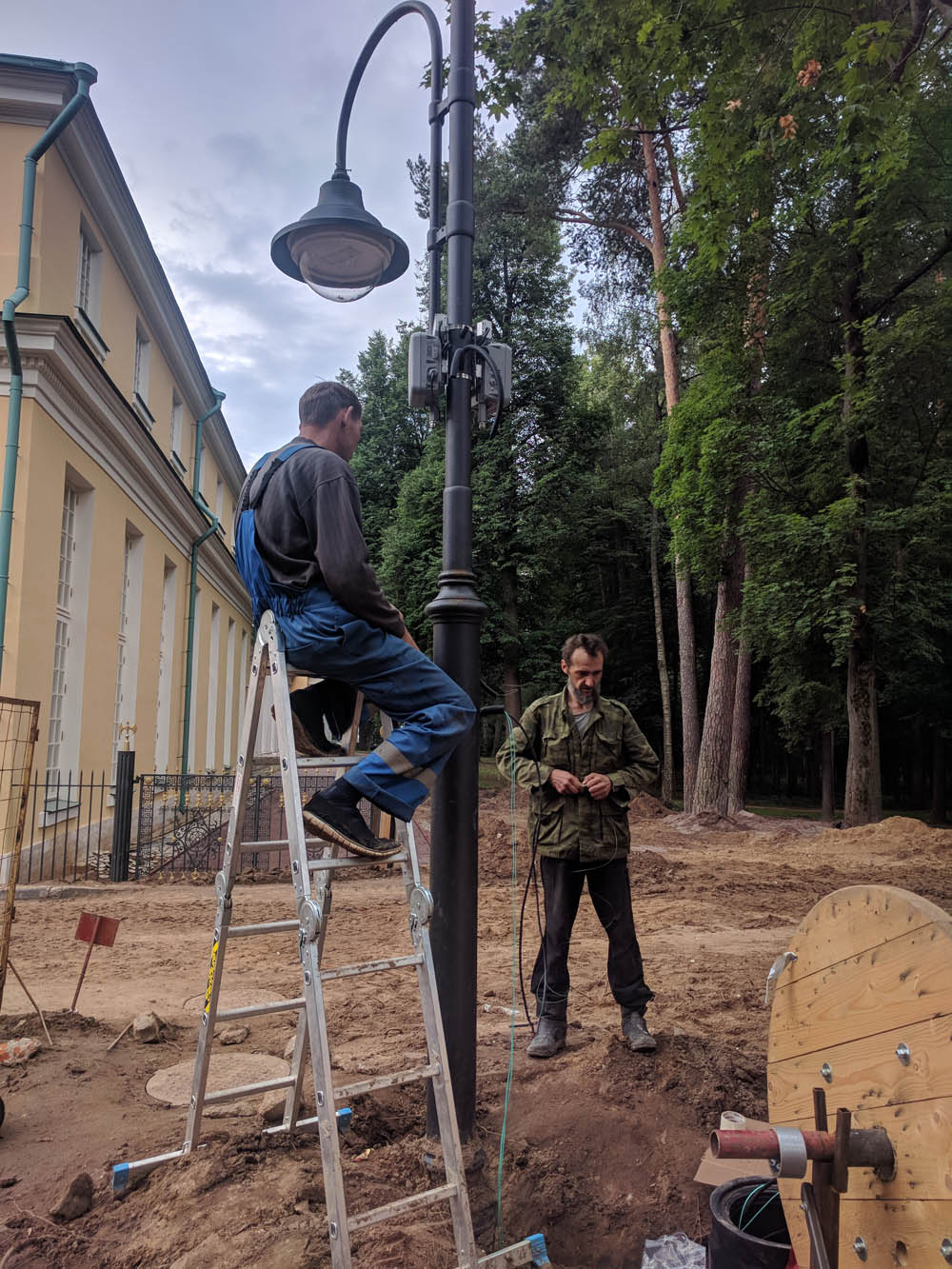
In 2019, the Arkhangelskoye Museum-Estate celebrated its 100th anniversary; colossal restoration work was carried out there. Normal Wi-Fi was introduced in the park so that art connoisseurs could ask Alice what they saw and what the artist wanted to say, and couples on benches to post selfies between kisses. Couples generally love this park and buy tickets, but every year the lack of a selfie saddens them more and more.
There is no cellular coverage here, because the entire territory is a particularly valuable object of the cultural heritage of the Russian Federation, plus a sanatorium of the Ministry of Defense is located nearby. There is a big problem with the placement of towers: you can’t just follow the design code, and there simply are no suitable sites inside. Mobile operators in such situations do a very simple thing: they put towers outside so that they "shine" on the museum grounds. That's just the outside of the museum is guarded by the Russian Guard. As I said above, according to the safety standard, towers are not there.
To solve the problem (lack of mobile operators in the park), we proposed making Wi-Fi coverage here and now.
A task
The Arkhangelskoye Estate Museum has set the task of designing a telecom unit in rooms and in park areas. Basically we are talking about SCS and Wi-Fi-zones. In parallel, it is necessary to design a monitoring system and several more subsystems that are important to the park. Since there is public Wi-Fi, you also need to deploy an authentication server (without a passport or a cell number by law it is impossible), protection (firewalls) and organize a server for the core network.
The specificity of the object is that it is a cultural heritage. That is, if this is a building, then most often you can screw something only into the underground space, either inside some kind of furniture, or somewhere else. The cable cannot be lead. All movements are coordinated with the architectural committee. Plus the special tolerances of the Ministry of Culture and so on.
The first part of the project is Wi-Fi coverage:
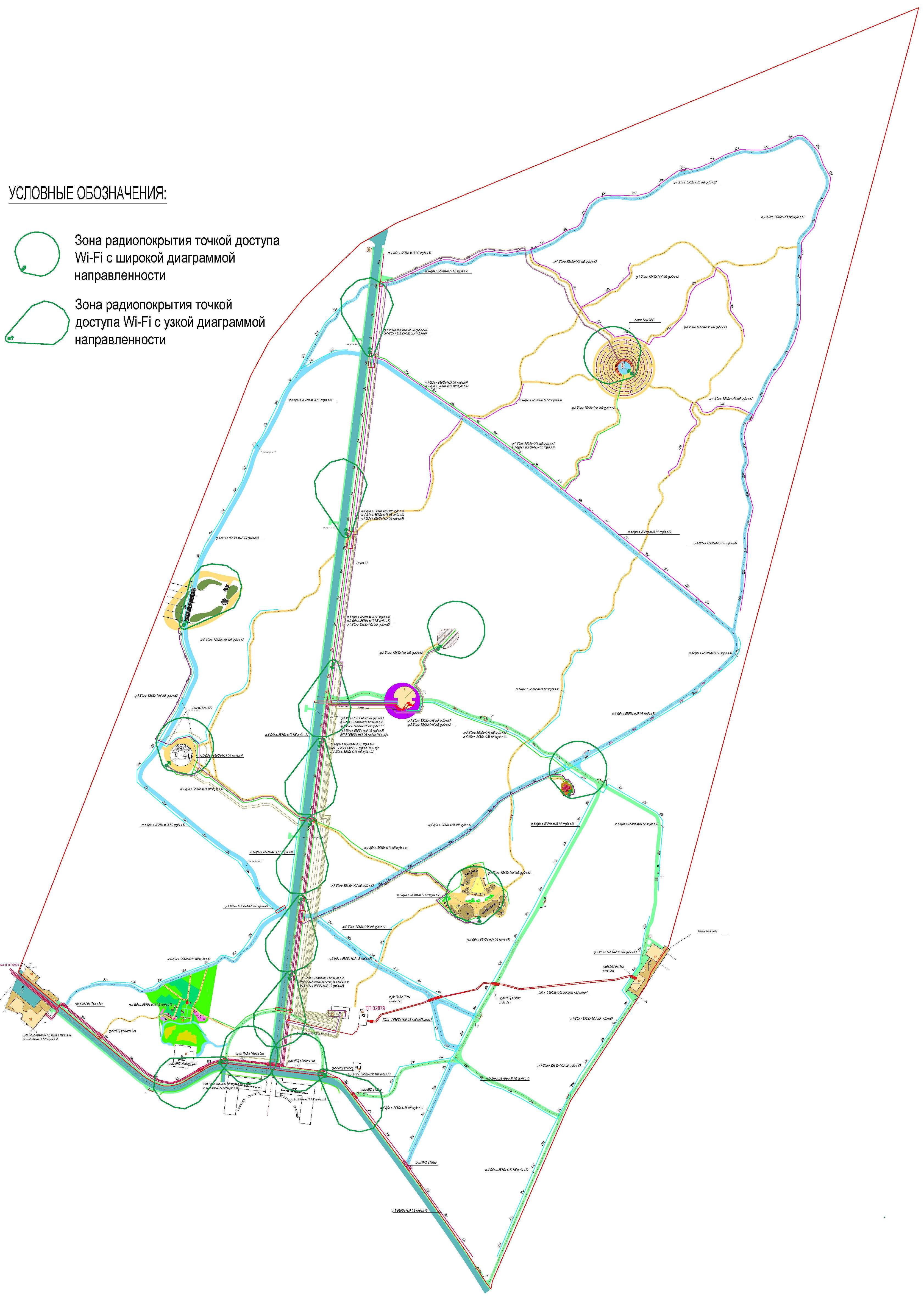
As you can see, the park is very large, so we first identified the main crowds and “covered” them with access points. Speech, first of all, about the main avenue
and buildings. The main alley is ready, you can test. Part of the buildings is in the next step.
Access points are used in two types: with a narrow and wide radiation pattern. Equipment Models:
Cisco-AP 1562d MO and Cisco-AP 1562i
In public places, there is a lot of emphasis on aesthetics, so external antennas at access points would be inappropriate. The Cisco AP1562D access point has a built-in antenna that allows you to direct the signal in the right direction - to the alley, and not to the trees, at the same time, this directional antenna is built into the case and does not violate the aesthetics.
In the case of the alley, there were no problems with the installation of the points themselves: new-made lights were already installed there, and the architectural committee allowed the boxes to be mounted on them. Not quite aesthetically pleasing, but objectively there were no other options, since one of the requirements is sufficient height so that the access point is not stolen:


It is impossible to power points from the flashlights: they are turned off during the day
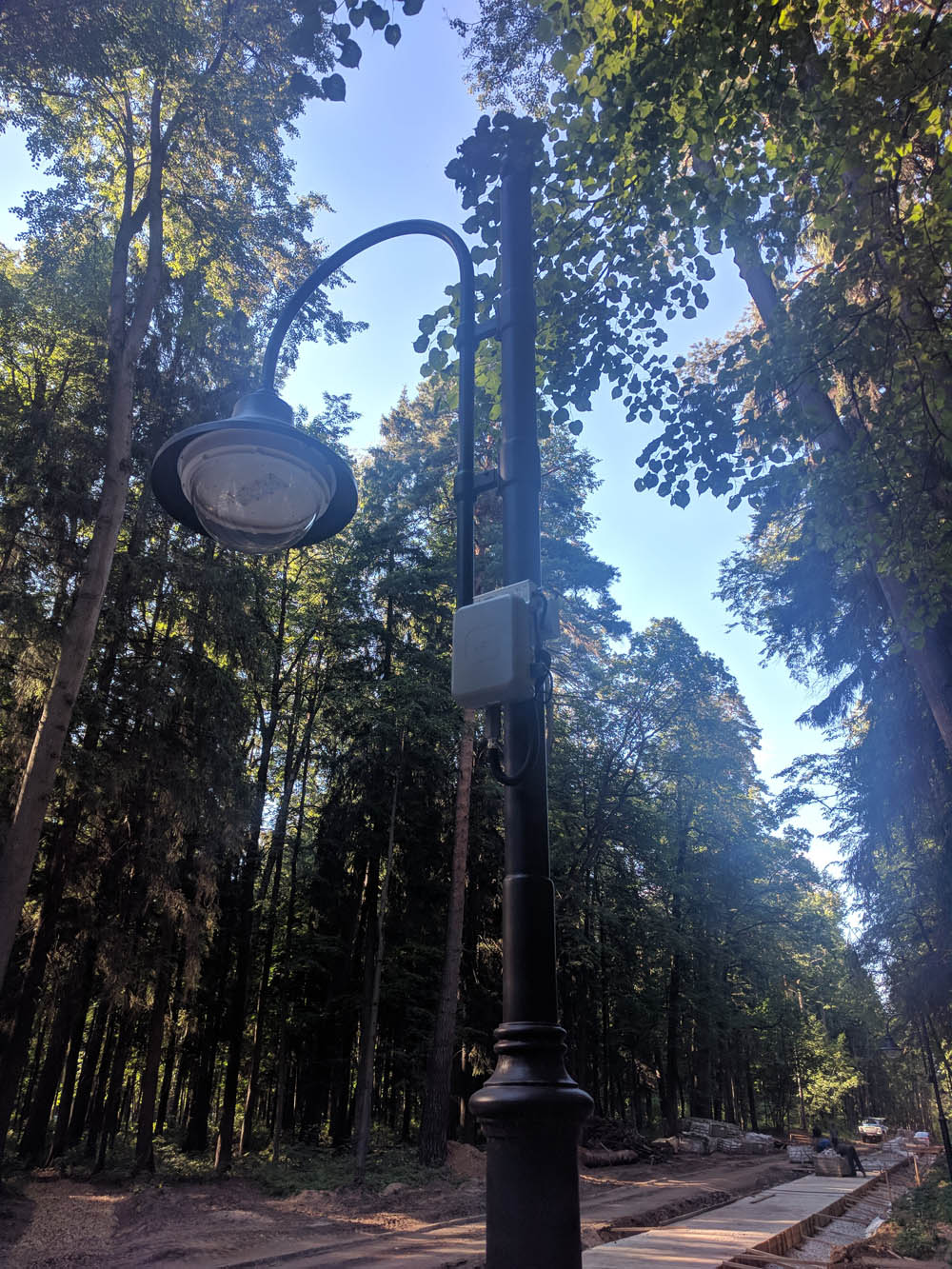
It was much more difficult to bring SCS to them. You can dig in the park, only each tree is guarded separately, so it was necessary to very clearly coordinate the trenches with centimeter accuracy. They zigzagged around the plants:
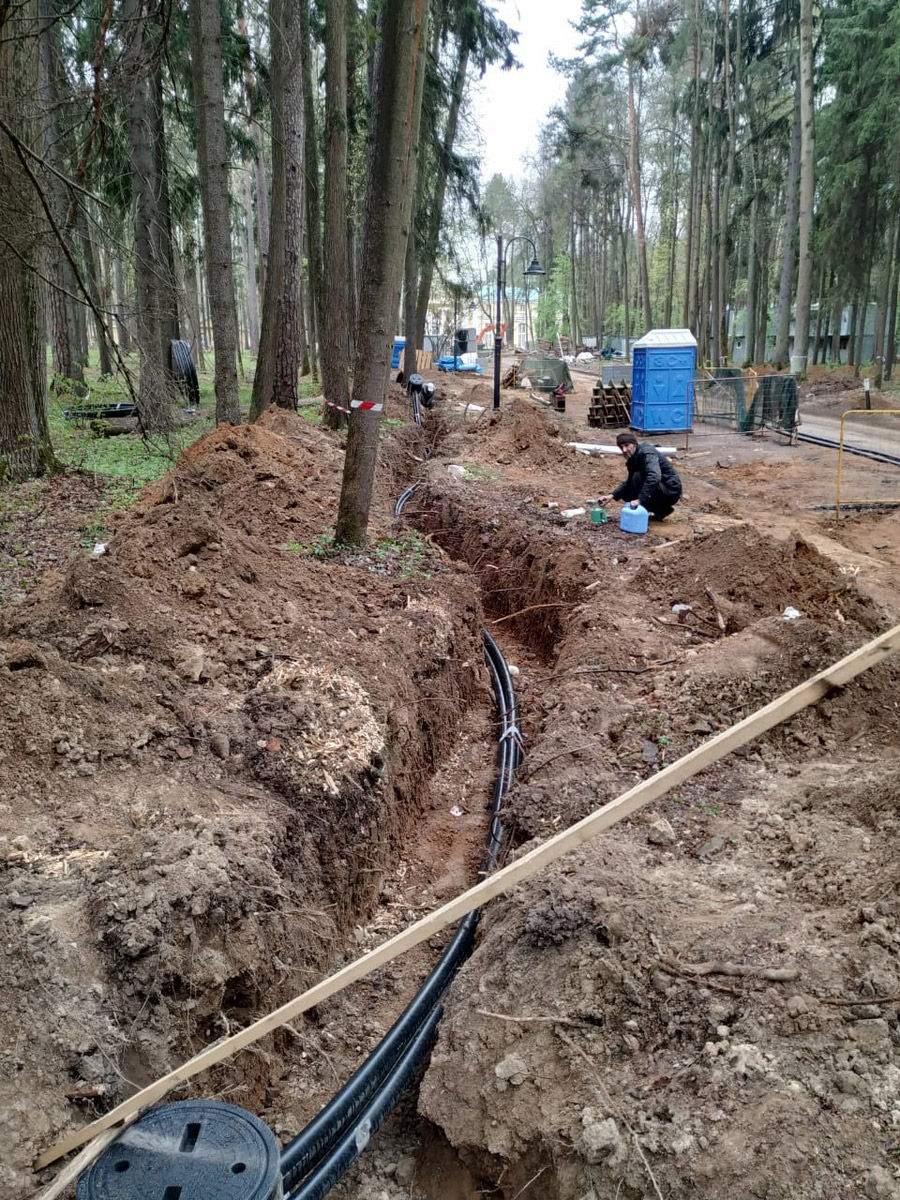
Power and optics. Too Long For PoE
Since they all have such an irregular shape, it was impossible to dig equipment, only with their hands. A lot of neat work.
For SCS there was, one might say, double protection. Specials for communication with adapters and on top are still mastic. Well plastic KKTM-1. The second was KKT-1. M is small. These are hermetic hatches that close and open with a special key, there is such a key for the well cover:
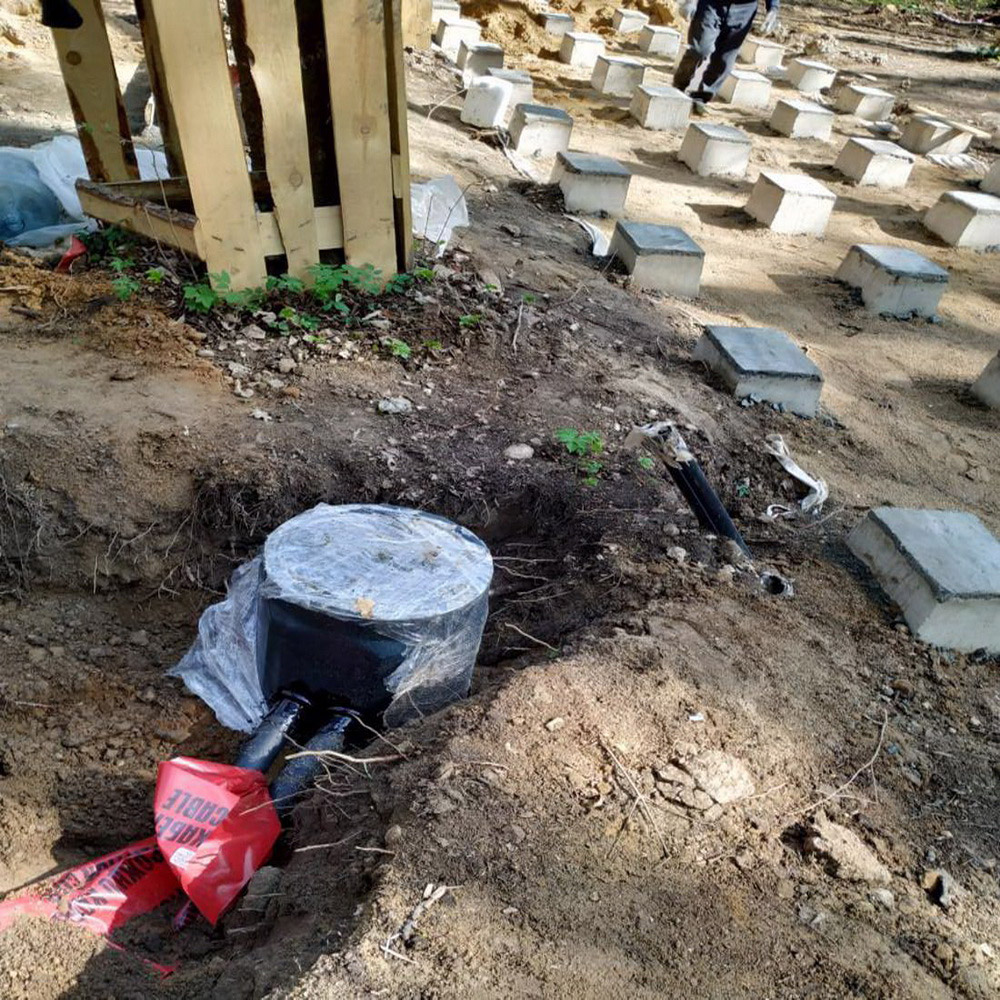
We just delivered 70 of them, and KKT-1 - in front of the building entrance. From it an input was made to the building of communications. Communications were introduced through adapters (pressurized input calipers). They are respectively of different diameters - 32 mm, 63 mm and 110 mm. And outside it was all covered with a bitumen-polymer waterproofing mastic, namely the entry point.

If you shy away a tree at the installation, the worker will go to prison for five years
There are no excavators in the park, but there are gardeners. According to the rules for laying communication, we laid warning tape on all pipes outside, and sprinkled soil on top. So that in the future, if people would carry out work in this place, they saw it and understood that somewhere in the region there were communications half a bayonet and did not cut them. It took two kilometers of this tape. It was agreed with environmentalists - it is neutral, specially reinforced, decomposes in the earth in 30-40 years.
Access points for HD coverage - like in stadiums. The 1560 Series access points have a dedicated, reinforced hardware platform that can withstand the tough loads of large public events. In Arkhangelsk, the same "Jazz Manor" is held, a music festival with a possible load of 100 thousand people. Therefore, such points are located on the Imperial Alley in the northern part, near the museum, near the theater (this, by the way, is a monument of world significance, and it is located across the highway from the main territory - it will be necessary to conduct SCS through the HDD-puncture under the road).
In and around the buildings themselves it is generally very difficult to install. This is a compromise between beauty and rationalism: lamps have already been installed there, and they are not visible from the outside. We decided that you can skip another box.
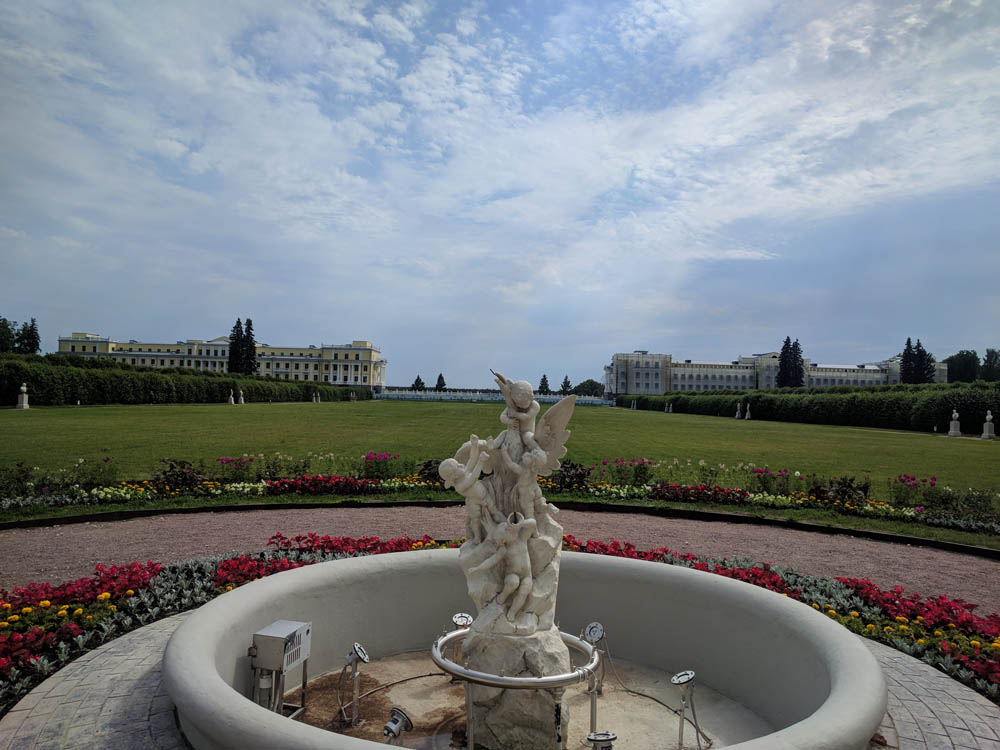
Access point works up to -40 Celsius
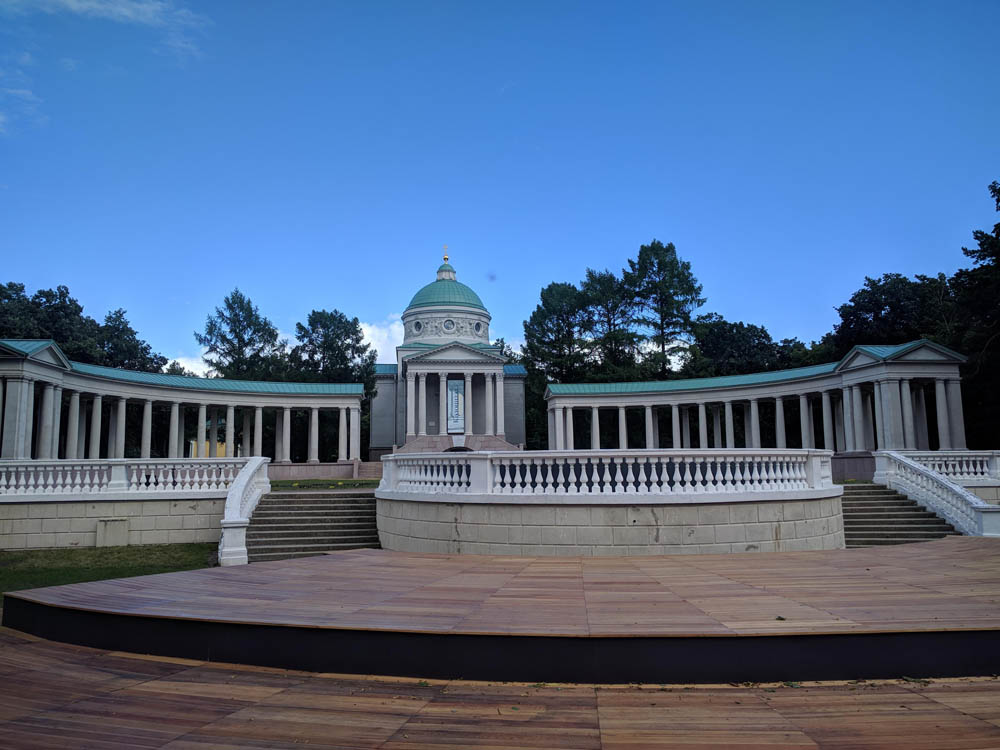
We also created an authorization portal. He asks to enter a phone number, then generates a call, and the last four digits of the incoming phone number must be entered in the authorization code field. From the points, statistics are collected on the number of devices on the network and the reappearance of the MAC in the park.
The network was built on Tsiska so that the museum subsequently minimally served the infrastructure. The solution is chosen so that during the operation of the network the customer does not spend a lot of money on technical support. The infrastructure will operate for several years, reliably and without downtime, without requiring replacement of equipment.
The result was a hybrid solution: somewhere industrial modules for tough operation, and somewhere - almost home. Nearby switches. The core is enough ports for expansion. Dubbed Catalists.
References
- Statistics in the store with visitors over Wi-Fi .
- Wi-Fi at a protected facility .
- Reconstruction of the historic courthouse in Smolensk .
- My mail is AChuvilin@croc.ru.
All Articles